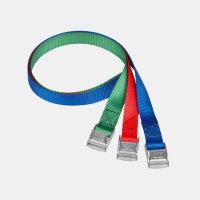Anti-Litter Nets
Nowadays, every waste disposal site operator is legally obliged to protect the area around the site from any contamination which could spread there from the site. For this reason, a guard fence is absolutely indispensable to the management of any modern waste disposal site. In particular, it prevents light waste such as paper, plastic wrappings or bits of foam from drifting onto adjacent areas.
As its name suggests, the anti-litter net prevents light, windborne materials such as pieces of paper, plastic or foam from accumulating outside a designated waste disposal area. The net for waste disposal sites is installed in places where refuse is temporarily stored in open spaces – and should preferably be mounted so as to span the entire area.

Sub-Categories to Anti-Litter Nets
A Anti-Litter Net is Mandatory, Pursuant to The Ordinance on Landfills
The correct management of waste disposal sites is stipulated by the German Ordinance on Landfills (DepV). It also specifies how to deal with contamination which can spill over from the waste disposal site to adjacent areas of land and open roads. Such “nuisances and hazards” are often caused by bits of refuse blowing about – mostly light materials like pieces of paper or plastic wrapping – which must be kept on the waste disposal site. The anti-itter net or waste disposal site fence fulfils this safety plan with no problem. As the material to be caught is only light, as a waste disposal site operator you need a catch net made of material that is not very thick but has small meshes.

Anti-Litter Netting Made to Measure
We offer models with a thickness starting at 1.8 mm and a mesh size of 20 mm. The material used is polypropylene, a high tenacity plastic fabric which has proved its worth in outdoor use. It is UV-resistant and weatherproof and can withstand many years of wind and weather. Safetynet365 offers anti-litter nets in well-proven sizes. If you need an individual size, we will make the waste disposal site net custom-made for your requirements. If your waste dump is not fenced in, it is best to use a tripod frame to support three or four-meter-high nets. You can find these and other accessories under the appropriate category.

Anti-Litter Nets Made to Measure
Anti-Litter Nets in 3.00 x 25.00 m
Anti-Litter Nets in 3.00 x 50.00 m
Anti-Litter Nets in 4.00 x 25.00 m
Anti-Litter Nets in 4.00 x 50.00 m
Sub-Categories to Anti-Litter Nets
Our Benefits
modified eCommerce Shopsoftware © 2009-2025
Code & Implementation: Rehm Webdesign





































